Deconstructing your job search and starting over is actually a very common piece of advice I give a lot of job seekers. Think about it. We often get so set in our routines doing certain things a certain way, we never stop to ask the question, “Is what I’m doing actually the BEST way to do get the results I’m looking for?”
Job seeking today is a lot more challenging and complex. Job seeking today requires specific knowledge and skills and a good understanding of the strategies, routines and habits of successful job seekers.
For the next few weeks, I’ll be discussing different strategies that might help you get out of your job seeking rut.
Applicant Tracking Systems
I know a lot of people, particularly those in mid-career, who, when faced with unemployment, simply fall back to the job-seeking strategies they used 10-20 years ago: Have one good resume, send it out to as many job postings as possible and wait for the phone to ring.
 Today, job seeking has become a lot more complex. With online job boards and access to hundreds of applicants, employers are relying on technology to help screen job seekers for positions. Job seekers are now required to customize their resumes for each job they apply and make specific arguments as to why they are most qualified for the position they are applying.
Today, job seeking has become a lot more complex. With online job boards and access to hundreds of applicants, employers are relying on technology to help screen job seekers for positions. Job seekers are now required to customize their resumes for each job they apply and make specific arguments as to why they are most qualified for the position they are applying.
When you fill out an online application, your information is being collected by an Applicant Tracking System, a powerful database that is programmed to search for key words and phrases. Based on these responses, the ATS spits out the most qualified responses to the HR recruiter for consideration. Of course, and ATS does a lot more in terms of helping to manage and organize information during the recruitment process, but for the job seeker, the goal is to work with these new technologies in ways that benefits their job search.
You will see an ATS being used at companies throughout your job search. Common ATS systems include Taleo and JobVite, but often, job boards like AH Jobs List, LinkedIn, and others provide ATS services to employers who want to screen and easily organize applicant information from job postings.
Does this process seem cold, heartless and unfair? Yes, but you have to look at it from an HR recruiter’s perspective where it is a simple matter of efficiency. For a single job posting, a recruiter might have over 200 job seekers applying for the position. That recruiter needs to access organized information quickly in order to make a quick determination about who is most qualified. I’ve heard from recruiters who readily admit that an ATS is not a perfect system for identifying the best candidates, but considering the time and effort involved, it provides them with a general snapshot of a candidate that allows the recruiter to determine whether they should follow up.
Saying that, there are ways for the job seeker to writer their resume and cover letters so they get the highest ranking and get to the top of a recruiter’s ‘to call’ list.
When you are read ing through a job posting, it is pretty simple to identify the 4 to 5 things that are the most important criteria to the employer for filling this job. The criteria is usually pretty similar in each job posting: background and years of experience, qualifications, job responsibilities, specific knowledge, skills and abilities and required education. It is your responsibility (and your opportunity) to connect the most relevant parts of your resume to show the employer WHY you are the one who best fits the criteria in job posting. The first touch point you have to do this is in your resume and cover letter as well as in the application (if required).
ing through a job posting, it is pretty simple to identify the 4 to 5 things that are the most important criteria to the employer for filling this job. The criteria is usually pretty similar in each job posting: background and years of experience, qualifications, job responsibilities, specific knowledge, skills and abilities and required education. It is your responsibility (and your opportunity) to connect the most relevant parts of your resume to show the employer WHY you are the one who best fits the criteria in job posting. The first touch point you have to do this is in your resume and cover letter as well as in the application (if required).
Remember, an ATS is searching for key words and phrases to determine how close you come to what the the hiring company is looking for. Once it gets into the top rankings that are spit out to a recruiter, the recruiter will then make a determination if your background is relevant to the position for which they are hiring.
You must customize your resume and cover letter and specifically repeat specific words and phrases in the job posting, but more importantly, you must make sure these words and phrases ARE CONNECTED to your own relevant experience, accomplishments, skills and abilities.
Customizing each resume might seem a bit overwhelming, but in fact, as a job seeker, you learn how to quickly exchange the main areas of your resume and cover letter to reflect the key phrases and words to best reflect your experience and make sure your resume is noticed by both the ATS and an actual recruiter.
A recruiter is held accountable in their job to find the best talent for their organization. They WANT to be your advocate if you are the best person for the position, but you have to make the connection as to why you are the most qualified. You can never assume that your background is easily interpreted by someone you’ve never met – YOU HAVE TO BE SPECIFIC about your accomplishments, experience, skills and abilities and connect these to the criteria spelled out in the job posting.
Bottom Line:
The job seeking process is about connecting your relevant experience to the position for which your applying. Confident, succinct and specific words and phrases that connect your background, experience and overall qualifications need to be laid out in ways that can both help an ATS give you a high ranking and to help a recruiter determine you are a candidate worth considering.









